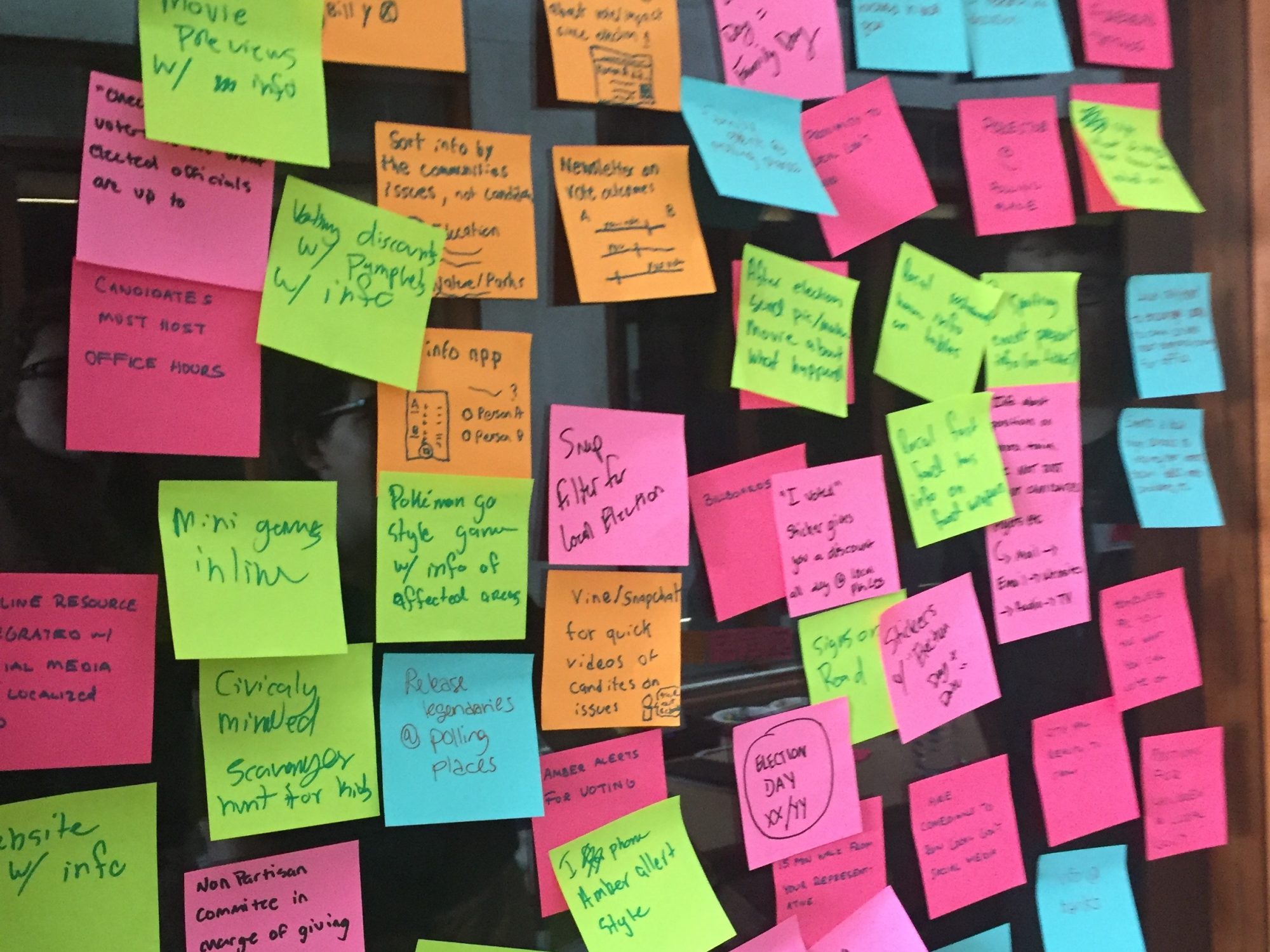Design for America is a program for students to use design thinking skills to solve social or environmental problems that are daring, feasible, and applicable. The focus is on creating a place for these types of students to come to together at the university and continually work in teams on specific projects of their choosing. Across the country, studio teams have produced solutions–like SwipeSense, a method to increase hand hygiene in hospitals and reduce hospital acquired infections–that have become successful companies and made a real impact in their communities.
The Design for America (DFA) Leadership Studio began the way every great conference does: with icebreakers. The purpose of the Studio was for the leaders and members of the studios to sharpen their design skills, network, and learn how to strengthen the leadership of their studio. I was there because I was lucky to receive the Changemaker Catalyst Grant, after myself and four others took over DFA Tulane in the spring. As all the hundred-odd students gathered in circle in ‘The Garage’ at Northwestern University, I pulled out my little Muji notebook, determined to fill the pages with every bit of design thinking-social innovation wisdom I could. However, with my generally slow and messy penmanship, I quickly discovered my biggest takeaway from the Studio: learn to fail.
To clarify, I did not go to the DFA Leadership Studio and just learn to fail. The first night began with a round of icebreakers and massive amounts of yummy food. We at DFA Tulane were on a mission to gather the necessary information to make our soon-to-be studio the best it could from its inception. The space was laid out like an expo for Studios to show off some of their work or give their advice. I walked through and chatted, while taking pictures of the material and talking with other studio members. I ended the night feeling excited and a little intimidated.
The second day was a chance for me to gain insight into how to actually run one of the DFA Studios at Tulane. This will become more and more apparent as you keep reading, but my team and I had no idea what we were getting into with DFA. In short, it’s a lot of work to run a studio. I spent all morning attending breakout seminars on things like “Studio Leadership” and “Studio Facilitation.” By the end, all of the students were split into teams of 4 to 5 people to begin a ‘design sprint’ that would take us through the entire design process in less than 12 hours of total work.
The prompt for this sprint was “How can we improve the voting experience?” My project team consisted of 4 other people, all from different universities and with very unique backgrounds. If you aren’t familiar with the design thinking or DFA process, here’s an overview: identify, immerse, reframe, ideate, build, and test. So, to be brief, my team went through this entire process, including three or four user interviews, five user testings, and a final expo with members from the community. We produced two ideas, tested both, and discarded one before the expo. The idea I worked on with a few of my teammates failed: it wasn’t feasible to present it at the expo without breaking it down into a watered-down version of what we had tested.
The last day was a chance for us to talk about what we wanted to take away from Leadership Studio with our teams from home. We went to the top floor of the Ford Building and had the chance to speak directly with the field coordinator for DFA National as we developed a plan for our first semester. We made concrete timelines and developed leadership roles, all while discussing what type of impact we wanted to make at Tulane.
On a macro scale, Leadership Studio prepared us to get started at Tulane and connected us to resources we didn’t realize were available. As a team, we came back better prepared and inspired to work hard, because we know this organization is worth it. But for me personally, I gained a level of confidence I had been lacking as a leader and as a student. I’m not going to seek out situations where I will fail–although that was suggested to me at the Studio–but instead I’m learning to detach myself from my failed projects and ideas, and be willing to walk away.

